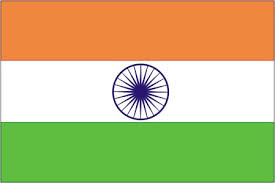Commercial Crop Improvement
- Two high yielding Flue Cured Virginia (FCV) varieties viz., CTRI-Navya (3000 kg/ha) and Sahyadri Swarna (2300 kg/ha) were released through CVRC.
- DTV 9 (NBD-316), a high yielding (3785 kg/ha) bidi tobacco variety was released for Karnataka Light Soils (KLS) in collaboration with AINPT.
- Promising FCV entries in On Farm trials are FCHH-2 (KLS), FCR-63 (SLS/BS).
- Promising FCV entries submitted to AINPT multiplication testing are V-5139, V-5143, V-5147, RS-36, RS-41, RS-42, RS-37 & RS-40, SJ-14, SJ-16, FCK8, FCK 9 and FCK 10.
- Promising ABLs were identified in various replicated trials for black soils (RS-47, RS-55, V-5149, V-5150), NLS (SJ-11, SJ-12, SJ-14, SJ-15 and SJ-16), SLS (KB 96 and KB 93) and KLS (FCH264, FCH 267, FCH270, FCH271, FCH273, FCH 279, FCH 282, FCH 283, FCH 284, FCH 286, M4-13 and M4-25) .
- Promising ABLs identified aphid resistant (KRB 3) and drought resistance (KDB 3 and KDB 8).
- Burley entries, BFC 7, Burley 181, Harrow velvet, Burley C 22-1, KY 42, and KY 16 recorded higher cured leaf under drought conditions
- A total of 153 motihari Tobacco germplasm accessions were screened for resistance to hollow stalk disease reaction at Dinhata and identified SK-101 as moderately resistant
- The DUS guidelines developed by ICAR-CTRI for FCV and bidi varieties were notified by Protection of Plant Varieties and Farmers Rights Authority, New Delhi and ICAR-CTRI is identified as DUS Testing Centre for registration of FCV tobacco varieties.
- A total of 1065 Single hit SSR markers were identified from the available 5500 SSR marker database (Solgenomics) and mapped to 24 linkage groups. 248 polymorphic SSR markers were identified after validating these SSRs among the selected 12 FCV and 12 Non-FCV genotypes.
- In order to further enrich the tobacco linkage map with polymorphic SSR markers, a total of 8,932 single amplicon hyper variable SSR (NtHvSSR) markers were identified from genome of N. tabacum cv K326 and validated across the available genome sequences of N. tabacum cv SR1 ZY300 TN90 and BX through E-mapping.
- Fusarium wilt resistance in tobacco showed digenic inheritance, exhibiting a 9:3:3:1 ratio. An SSR marker (PT60988) and 8 genomic regions on Chr02, Chr05, Chr08, Chr12 and Chr19 were found to associate with Fusarium wilt resistance.
- Through QTLseq approach, eight significant genomic regions on five chromosomes were found to be associated with Fusarium wilt resistance.
- Out of 70 markers studied between Orobnache resistant and tolerant genotypes, 21 were found to be polymorphic. Out of 7 orthologous Strigalctone pathway genes analysed, CCD8 gene reported higher level of expression in Orobanche tolerant genotype. Two SSR markers associated with O. ramosa resistance were found to be associated O. cernua resistance.
- To reduce TSNA levels in burley tobacco, CRISPR/Cas9 was used to knock down CYP82E family genes, which convert nicotine to nornicotine, a TSNA precursor. Two sets of gRNAs were designed: one targeting CYP82E4 and another targeting the consensus region of CYP82E4, E5, and E10.
- To reduce TSNA levels in burley tobacco through CRISPR/Cas9 genome editing, three gRNA constructs, each, targeting CYP82E4 and the consensus region of CYP82E4 CYP82E5 and CYP82E10 genes involved in TSNA biosynthesis were designed. Using CYP82E4 gRNA, generated four T0 genome edited plants in the background of Banket A1 with a sequence addition of T / A at target site disrupting the CYP82E4 gene.
- Through whole-genome resequencing of 100 diverse tobacco genotypes including germplasm lines and released varieties of FCV, burley, bidi, and chewing types at a coverage depth of 35X and variant calling at a read depth of 25, identified SNPs ranged from 34,989 (Chatam) to 29,56,367 (GT-6) with a mean value of 16,438 bp.
- Size of Orobanche genome was found to be approximately around 1GB and 22 chromosomes in diploid state.
- Promising chilli selection were identified for high dry fruit yield (DinCh-330; 2633.3 kg/ha), capsaicin content (Pant C1; 3724 µg g⁻¹ and DinCh-262; 3297 µg g⁻¹).
- Also identified anthocyanin (Cyanidin-3-Glucoside) rich black selection ( DinCh 68-10-3; 645.58 µg g⁻¹), orange-fruited selections (DinCh 249-2-1-1, DinCh 249-2-5-5, and DinCh 252-12-60, dark orange fruited high carotenoids (DinCh-252-12-6; 1400 µg g⁻¹).
- Identified promising chilli genotypes for multiple traits (Tamen Long King Chilli and Ukhrul King Chilli Dollekhusani) .
- 330 genotypes of ashwagandha were augmented ( 300 NBPGR + 30 DMAPR).
- Evaluated 300 ashwagandha accession and grouped based on the 29 DUS descriptors.
- Best performing ashwagandha genotypes for root yield at Rajahmundry are ASG-307, ASG-306, ASG-15, ASG-309, ASG-305, ASG-215, DWS 205, DWS-132, MWS-219, MWS-204.
- Ashwagandha accessions WS 4, WS 139, WS 295, WS 162, and WS 296 were identified as higher dry root yielding (>40 g per plant) at Vedasandur.
- 250 Ashwagandha genotypes evaluated for 5 Withanolide compounds (Withaferin A, 12-Deoxywithastramonolide, Withanolide A, Withanone and Withanolide B) .
- Ashwagandha genotypes, ASG-16 (30.85q/ha; 0.27%), ASG-129 (18.35q/ha; ) and ASG-17 (30.39q/ha; 0.17%) found to have high root weight and withanolide content.
- A total of ~20,000 kg pure seed of cultivated tobacco varieties were produced and supplied to tobacco farmers and realized an amount of about Rs. 2.52 crores.
 GOVERNMENT OF INDIA
GOVERNMENT OF INDIA  || MINISTRY OF AGRICULTURE AND FARMER'S WELFARE
|| MINISTRY OF AGRICULTURE AND FARMER'S WELFARE






